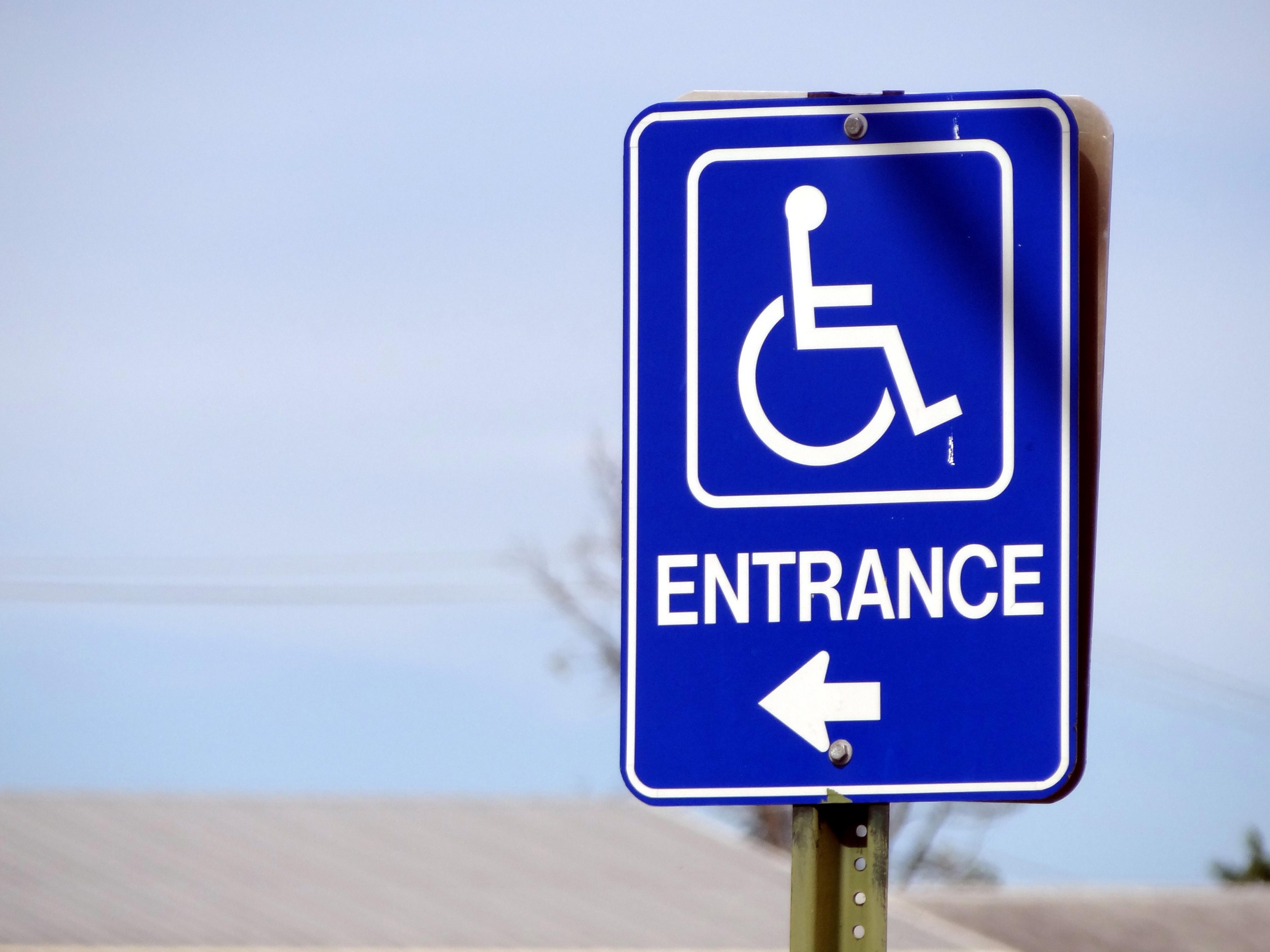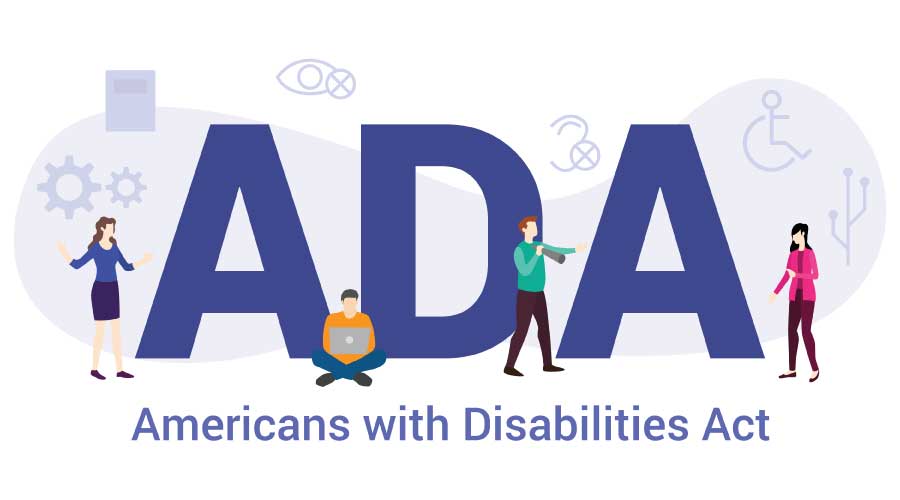ADA Experts Discuss 2010 Standards
By Chris Matt, Managing Editor - Print & E-Media
OTHER PARTS OF THIS ARTICLEPt. 1: This Page
*Joan Stein, President & CEO, Accessibility Development Associates Inc., Pittsburgh
*Peter Berg, Project Coordinator of Technical Assistance, ADA National Network, DBTAC Great Lakes ADA Center, Chicago
*Carol Cocuzzi, Principal, Accessibility Matters LLC, Pittsburgh
Almost 20 years after its inception, the Americans with Disabilities Act (ADA) has undergone significant changes. The U.S. Department of Justice (DOJ) published the 2010 ADA standards in the Federal Register on Sept. 15, starting the clock on an 18-month period maintenance and engineering managers can use to learn about the updated regulations and their impact on facilities before they go into effect on March 15, 2012.
What are three key technical differences between the 1991 and 2010 standards?
STEIN: First, there's a change in the reach ranges for where you mount anything like a dispenser, light switches or electrical outlets. Under the 1991 standards, they allowed for a maximum of 54 inches above the finished floor for a side approach and a maximum of 48 inches above the finished floor for a front approach. The 2010 standards have basically blended with the ANSI requirements and say it's 48 inches maximum for either front or side. The second is probably the biggest one we find, and that is, under the 1991 standards, the requirements for the toilet center line — the space from the side wall to the center of the toilet — is an absolute 18 inches. Under the 2010 standards, they again have mirrored what's in the ANSI requirements, which is a range of 16-18 inches for a toilet in a standard, accessible stall. They give the range as opposed to the absolute. Third, they increased the clear-floor-space requirements for water closets in a toilet room.
BERG: One of the areas where the (U.S.) Access Board and Department of Justice attempted to make compliance with the standards a little easier is, wherever possible, they've gone to ranges instead of absolutes. There were fairly significant changes with reach ranges. The 1991 standards allow for a higher reach range when an element can be approached by a side or parallel approach. It's 54 inches on the high side and 9 inches on the low side. The 2010 standards have unified that. So for either a forward or parallel approach, the reach range is 48 inches on the high side, 15 inches on the low side. The most significant thing is the new supplemental areas. In the 1991 standards, there were no scoping or technical requirements for the various types of recreation facilities. Those are now part of the 2010 standards.
COCUZZI: Facilities now can reduce down (the number of accessible seats in assembly areas, for example) using the 2010 standards, where a lesser requirement is allowed. The second is accessible routes. In the 2010 standards, they are requiring that accessible routes coincide with those of the same areas as the general public, whereas, in the 1991 standards, it was always to the maximum extent feasible. The third one is different requirements for toilet rooms because those are generally one of the most talked about when it comes to accessibility. There are going to be new requirements for clear floor spaces in toilet rooms.
Is there a difference between the 2010 standards and the 2004 ADA/Architectural Barriers Act Accessibility Guidelines?
COCUZZI: The new ADA standards are based on what was developed in 2004 when the new guidelines were originally supposed to come out. When the whole process began to revise the guidelines to include different types of facilities and areas, it was originally going to be adopted around 2004 or 2005. But they kind of sat there for a while. A major difference in the 2010 standards is in the regulatory part, where they address ticketing, service animals, safe harbors and communications, and mobility devices, such as Segways.
How will the new standards affect compliance efforts?
STEIN: When you talk about the compliance process, it's an 18-year-old process, which began on Jan. 26, 1992. What the Justice Department is doing with this set of regulations and time frames is trying to deal with the fact that when they passed the ADA in 1990 and gave the 18-month period for the regulations to be completed — between July 26, 1990 and Jan. 26, 1992 — this was the first time in history companies in private industry had obligations to address anything related to accessibility. The Justice Department is trying to put in that same kind of grace or implementation period (with the 2010 standards). They are actually giving managers and everybody else more options because as of Sept. 15, 2010, you could choose to use either the 1991 standards or the 2010 standards. But when you make that choice, as a colleague of mine said in an e-mail recently: "You've got to pick that horse and ride that horse."
COCUZZI: Yeah, it will, particularly those that may be (undertaking projects) under new construction and alterations. They're going to have the ability to use these standards and reduce down, which will be cost savings to them. It will also enhance accessibility in certain areas.
BERG: For some venue types, it may make sense or (managers) may want to use the 2010 standards. For example, I'll use assembly areas. For large assembly venues (such as sports arenas), in the 2010 standards there are fewer wheelchair-seating locations required. There is a reduction in the number of accessible wheelchair-seating locations. For a larger venue, you can use the 2010 standards and actually remove some wheelchair-seating locations and put in standard seats.
Can you explain the safe harbor?
COCUZZI: If you have a facility that you are in total compliance with under the 1991 standards, you're not going to need to have to modify anything until you decide to make alterations after the 18-month period. Even beyond that, if you choose not to (make alterations), and you're in compliance, you're fine.
BERG: The safe harbor becomes effective March 15, 2012. That's the date the 2010 standards are the only standards that can be used. At that point, if a building or facility was constructed or altered in compliance with the 1991 standards or, if it was a state or local government entity and they used UFAS (Uniform Federal Accessibility Standards), they do not have to touch those areas. They fall into that safe harbor because they were constructed or altered in compliance.
STEIN: Facilities have a period of time now where, if you are confident that your facility is compliant — you've identified all of your barriers and have completed all readily achievable barrier removal, or you altered or newly constructed since 1992 and you are 100 percent confident your design professionals really did understand (ADA) is a civil-rights law and not a building code — then those can be your safe harbors. The safe harbor means you will not have to do anything until the next time you touch that area — make modifications that are structural in nature and affect primary function of the space.
When planning retrofits or new construction projects, how do managers balance the need to comply with both ADA standards and building codes?
STEIN: It's important to understand that the ADA is a civil-rights law, not a building code. The ADA does have a provision that, if there's a state or local code that provides for a greater degree of accessibility or is more stringent, that will supercede the federal standards. That is the only time they will supercede the federal standards.
BERG: It's the federal government that enforces ADA. Local building-code officials don't have authority. They only have the authority to enforce the state building code or local municipal code. ADA standards clearly state that wherever there is a conflict between the federal code and a state code, you must comply with whichever provides greater access or is least restrictive.
COCUZZI: Sometimes, if you comply with ADA and you don't comply with the building code, you're not going to get your occupancy permit. We're hoping with these new standards — which are actually based on ANSI A117, which deals with accessible buildings and facilities — will reduce compliance issues between (ADA and ANSI). Up until then, there were significant differences in the technical and scoping requirements versus ANSI, and, a lot of times, significant confusion. That really caused great havoc between the building-code inspectors and building managers that have these two documents they have to comply with.
Why did the changes focus on recreational facilities, detention facilities, courthouses, etc.?
BERG: Areas where there were no scoping or technical requirements in the 1991 standards, there are no safe harbor for those come March 15, 2012. The Access Board, in its development of guidelines, recognized that there were certain facility types that presented unique accessibility issues. Therefore, they felt that there needed to be specific scoping, and more importantly, technical requirements for providing access at these various types of facilities. Recreation facilities, courthouses, penitentiaries, holding cells, for example, have different features that weren't really addressed in the 1991 standards.
COCUZZI: Up until this point, there were no technical or scoping regulations for those specific areas. You had to think outside the box and say, "What can I do to make these specialty areas more user friendly?"
STEIN: There are completely new areas in 2010 that were never addressed in 1991 — children's environments, outdoor recreation, golf courses, boats, etc. There are new rules that address those issues, and there is more specification and more detailed requirements for things that were not clearly defined in 1991 but created quite a lot of litigation. There are now technical and scoping requirements. Before (the new regulations), if you were evaluating a child-care center under ADA, you didn't have anything that said a toilet can't be any higher than X inches, or that a table where kids work can't be X inches. There were no enforceable standards.
Can you talk about the effective communication portion of the changes?
STEIN: There is a lot more available now in terms of technology for effective communication. It doesn't just say, "Effective communication dependent on the scenario and the extent, duration, and importance of the communication." What (the DOJ) found was there were too many lawsuits. People just weren't using common sense. When you're installing (effective-communication measures) from the beginning, the cost is nothing. It's when you didn't do it and you have to retrofit it (where it gets expensive). The technology explosion — smart phones, video conferencing, etc. — that everyone is using is also extremely effective for individuals with disabilities.
COCUZZI: Under the new regulations, a public accommodation is going to need to include what is called video remote interpreting, which can be used as a means of effective communication. For example, where they may have had to bring in a sign-language interpreter, which is expensive, now they can do it real time through full-motion video and interpreting. It probably in the long run will allow for a cost savings.
Related Topics:










